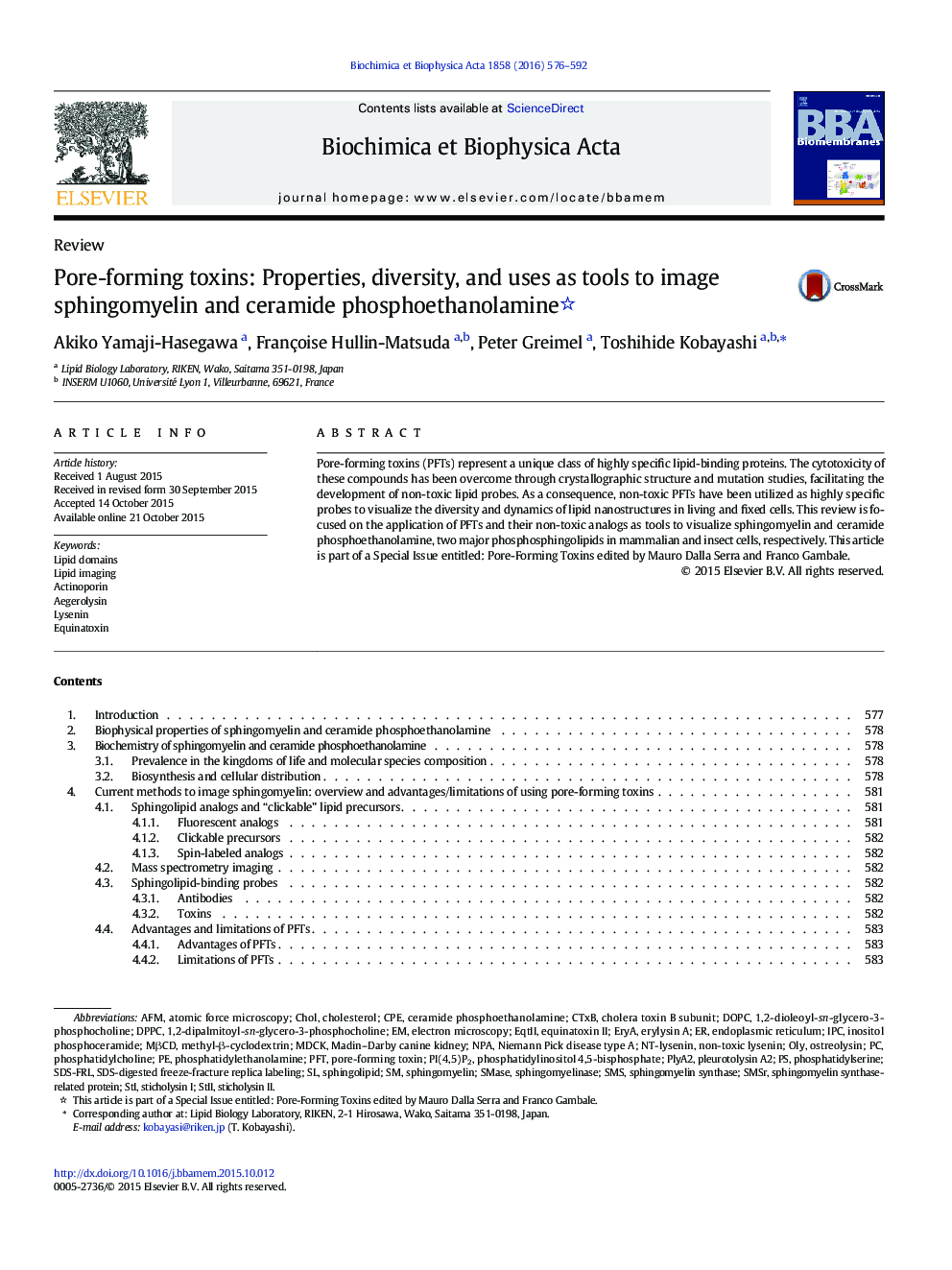| Article ID | Journal | Published Year | Pages | File Type |
|---|---|---|---|---|
| 1944003 | Biochimica et Biophysica Acta (BBA) - Biomembranes | 2016 | 17 Pages |
•Pore-forming toxins (PFTs) represent highly specific lipid-binding proteins.•Non-toxic PFT derivatives are used to visualize lipids in live and fixed cells.•Specific PFTs are applied to visualize sphingomyelin and ceramide phosphoethanolamine.•PFTs revealed different pools of sphingomyelin in biological membranes.
Pore-forming toxins (PFTs) represent a unique class of highly specific lipid-binding proteins. The cytotoxicity of these compounds has been overcome through crystallographic structure and mutation studies, facilitating the development of non-toxic lipid probes. As a consequence, non-toxic PFTs have been utilized as highly specific probes to visualize the diversity and dynamics of lipid nanostructures in living and fixed cells. This review is focused on the application of PFTs and their non-toxic analogs as tools to visualize sphingomyelin and ceramide phosphoethanolamine, two major phosphosphingolipids in mammalian and insect cells, respectively. This article is part of a Special Issue entitled: Pore-Forming Toxins edited by Mauro Dalla Serra and Franco Gambale.
Graphical abstractFigure optionsDownload full-size imageDownload high-quality image (122 K)Download as PowerPoint slide
